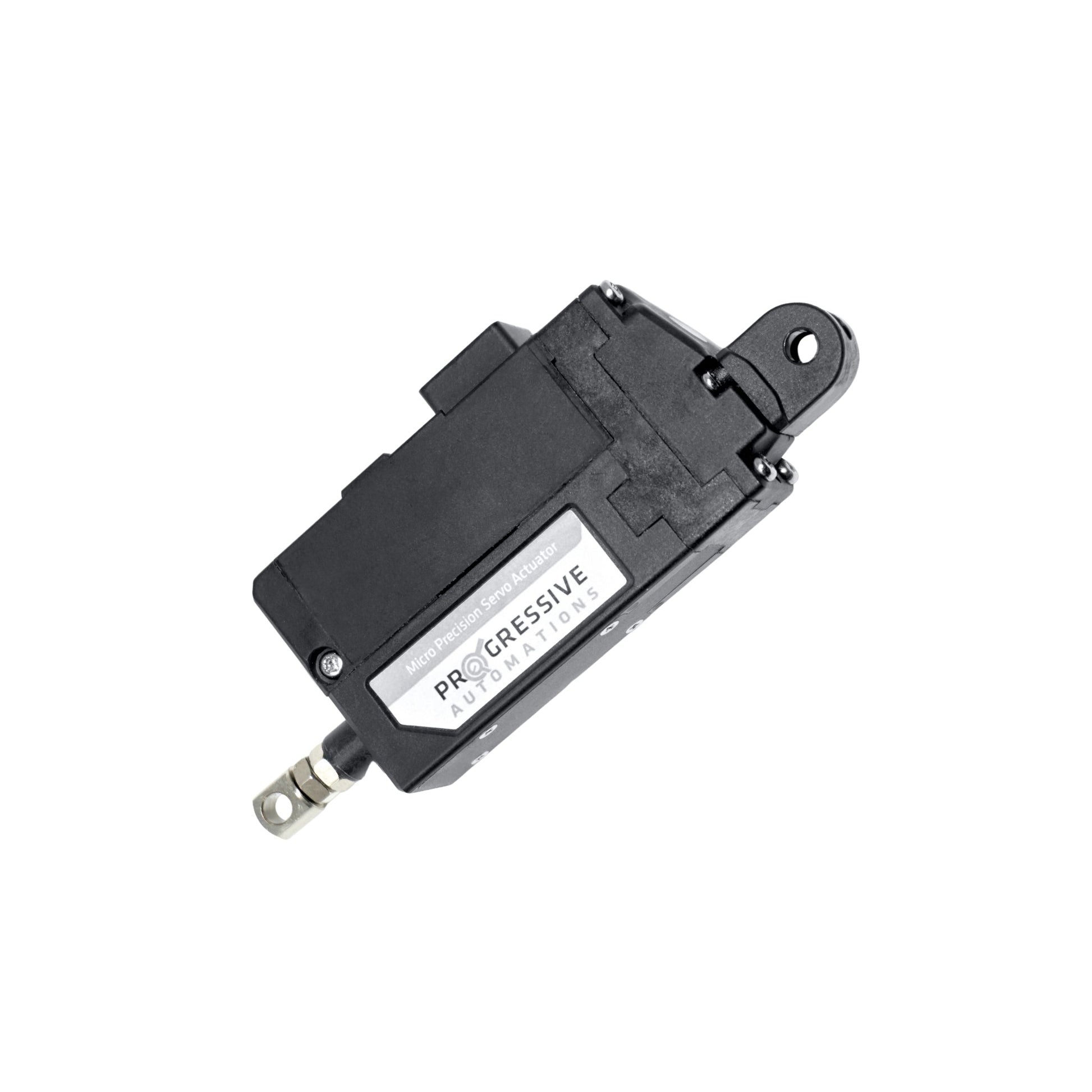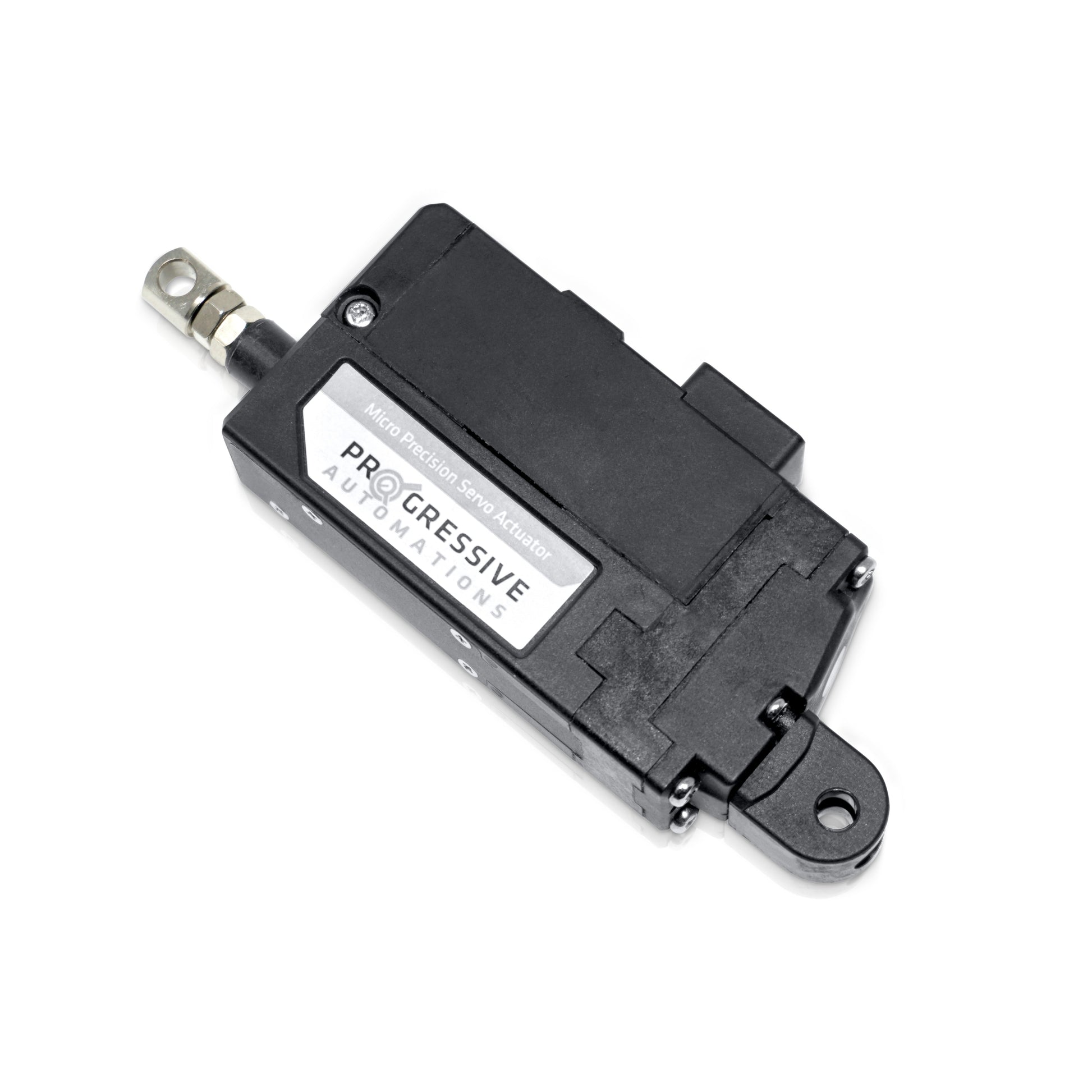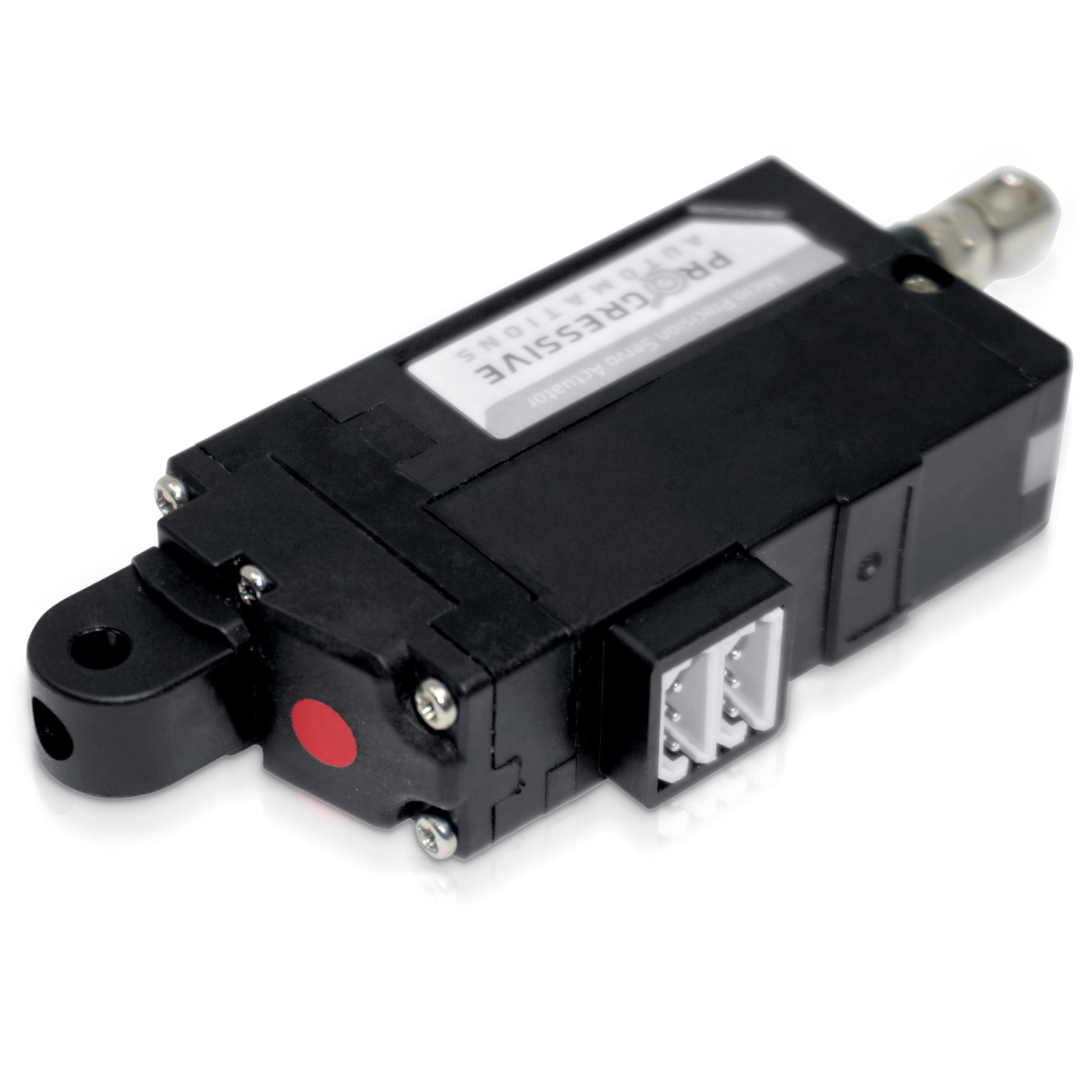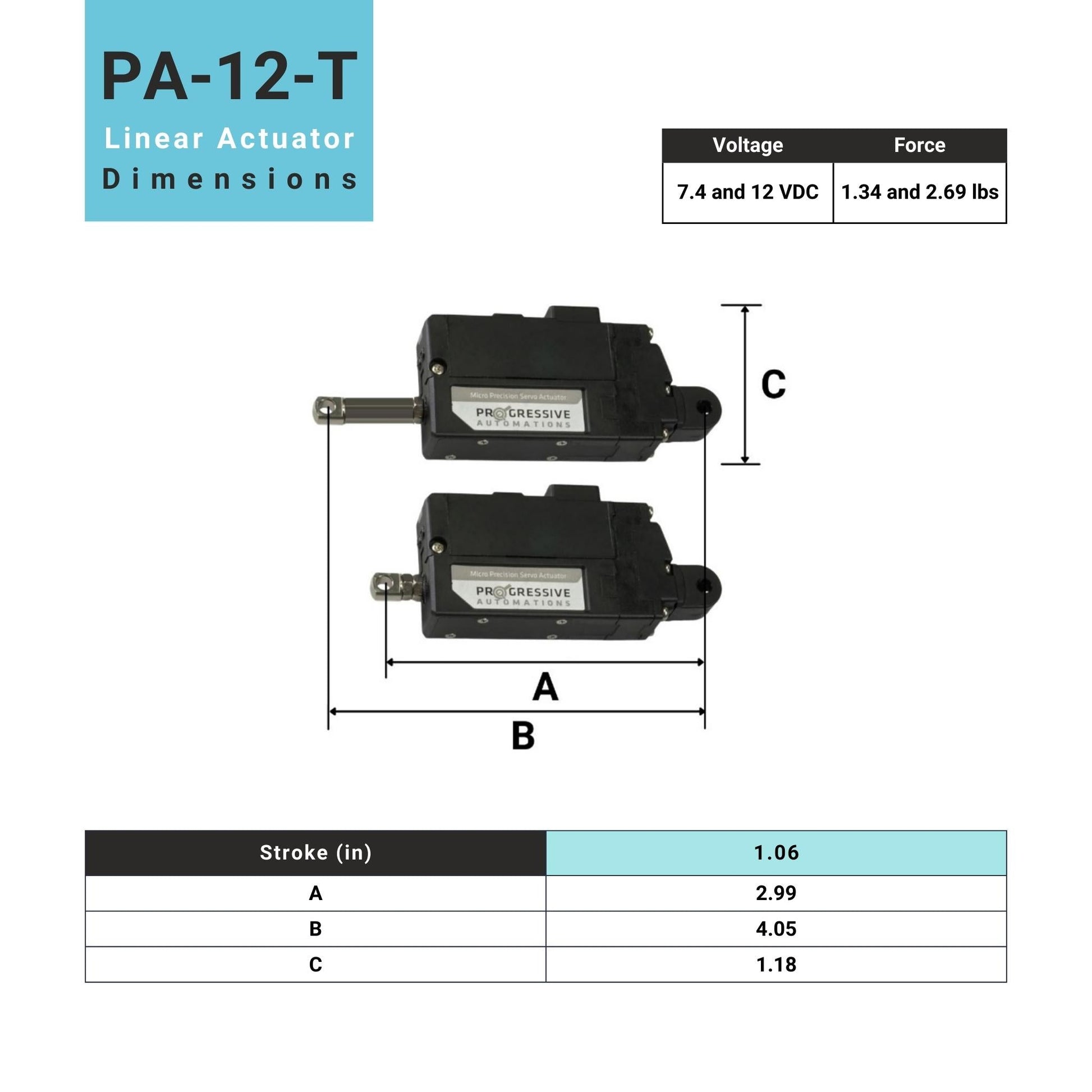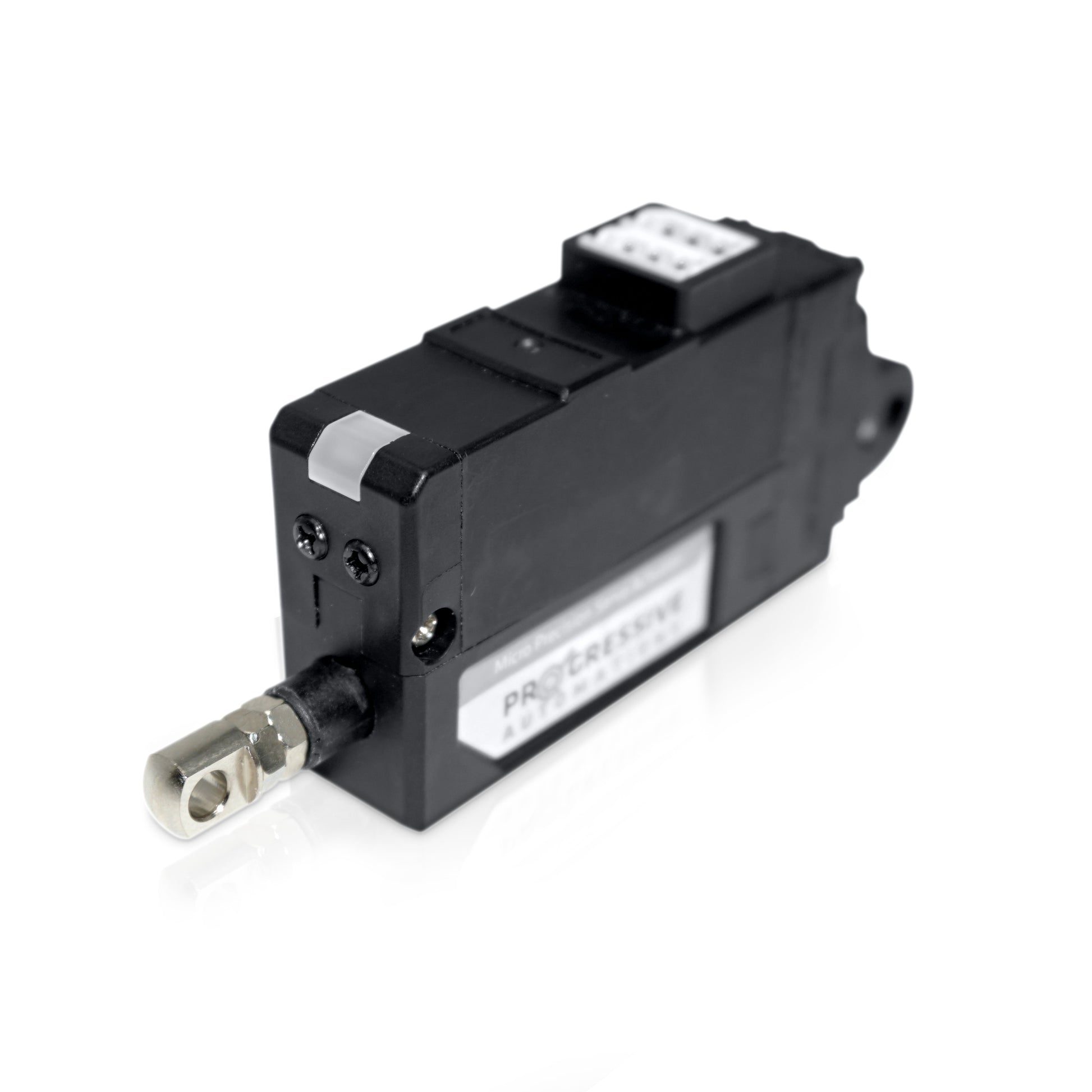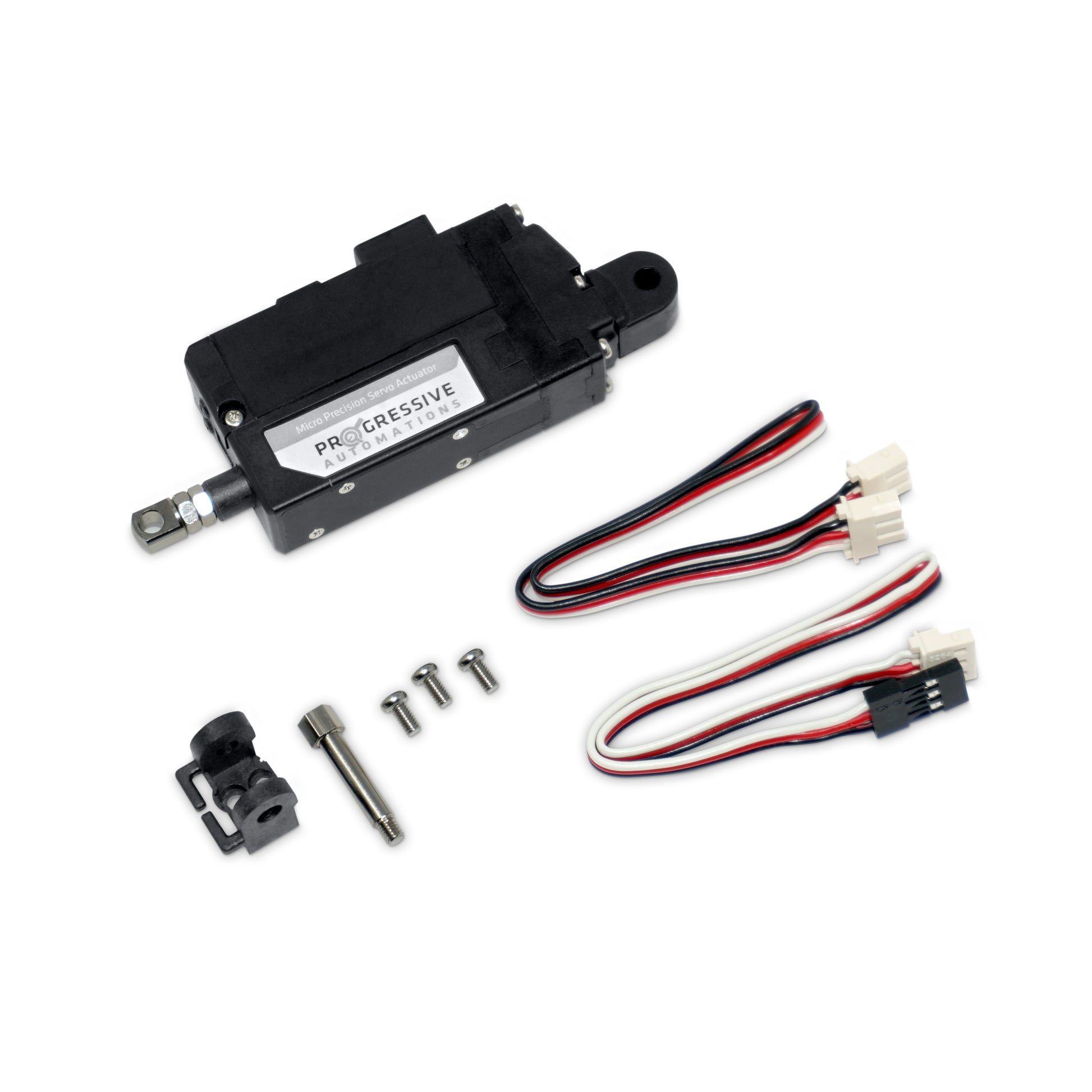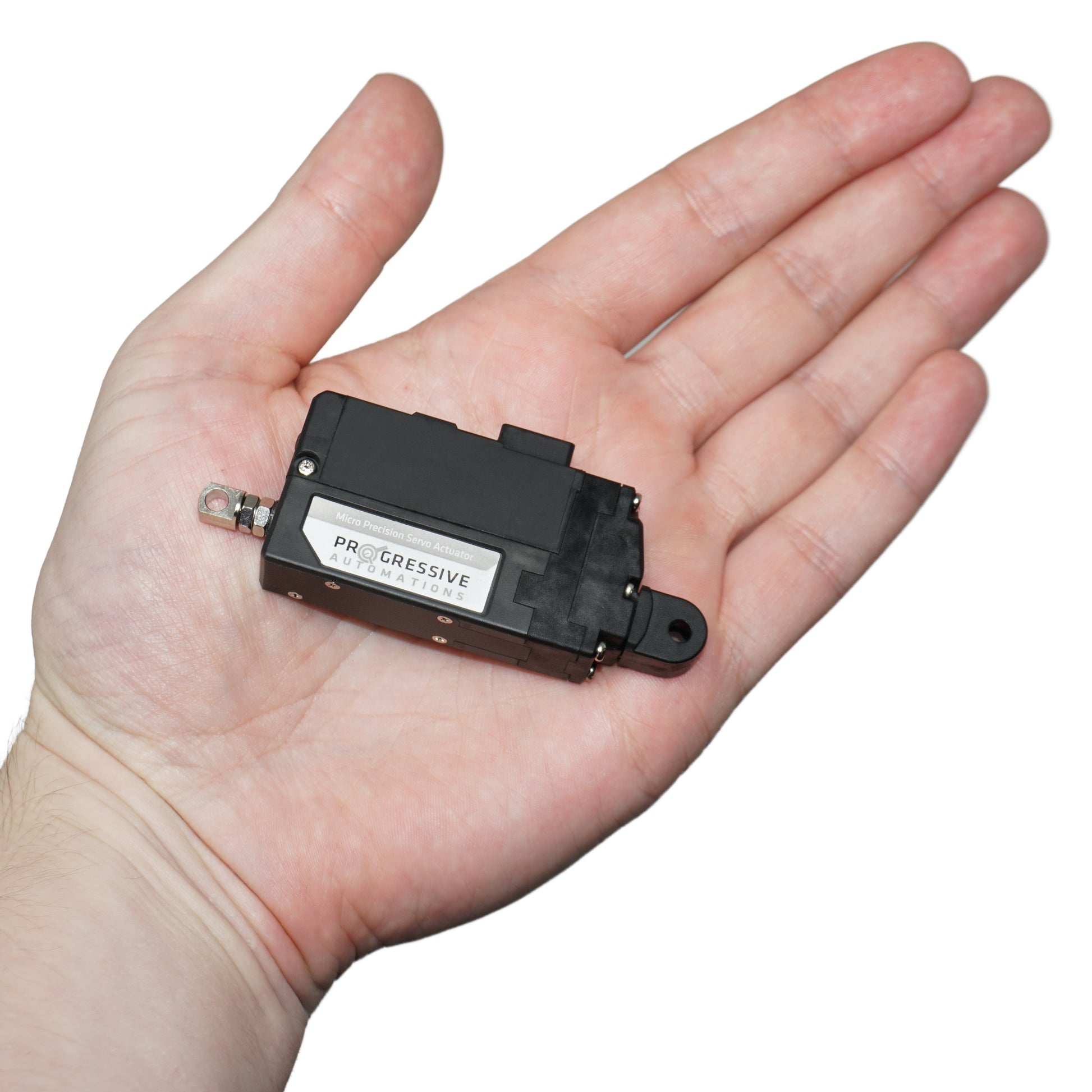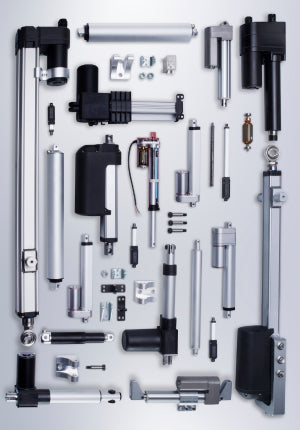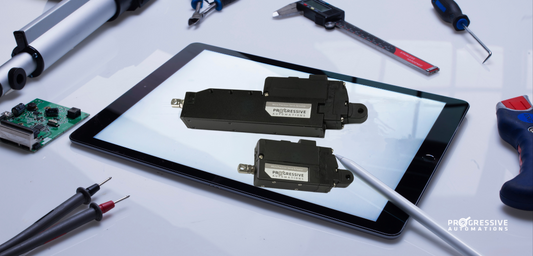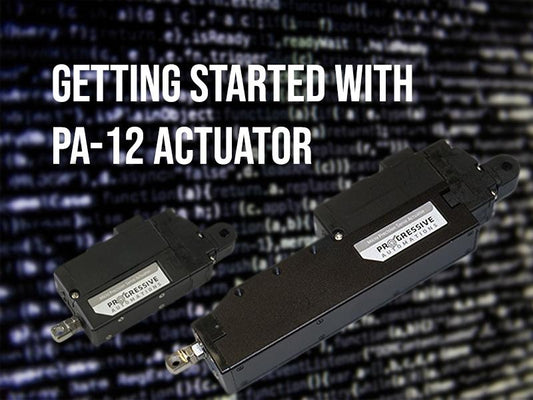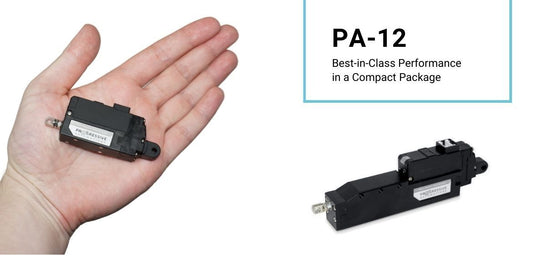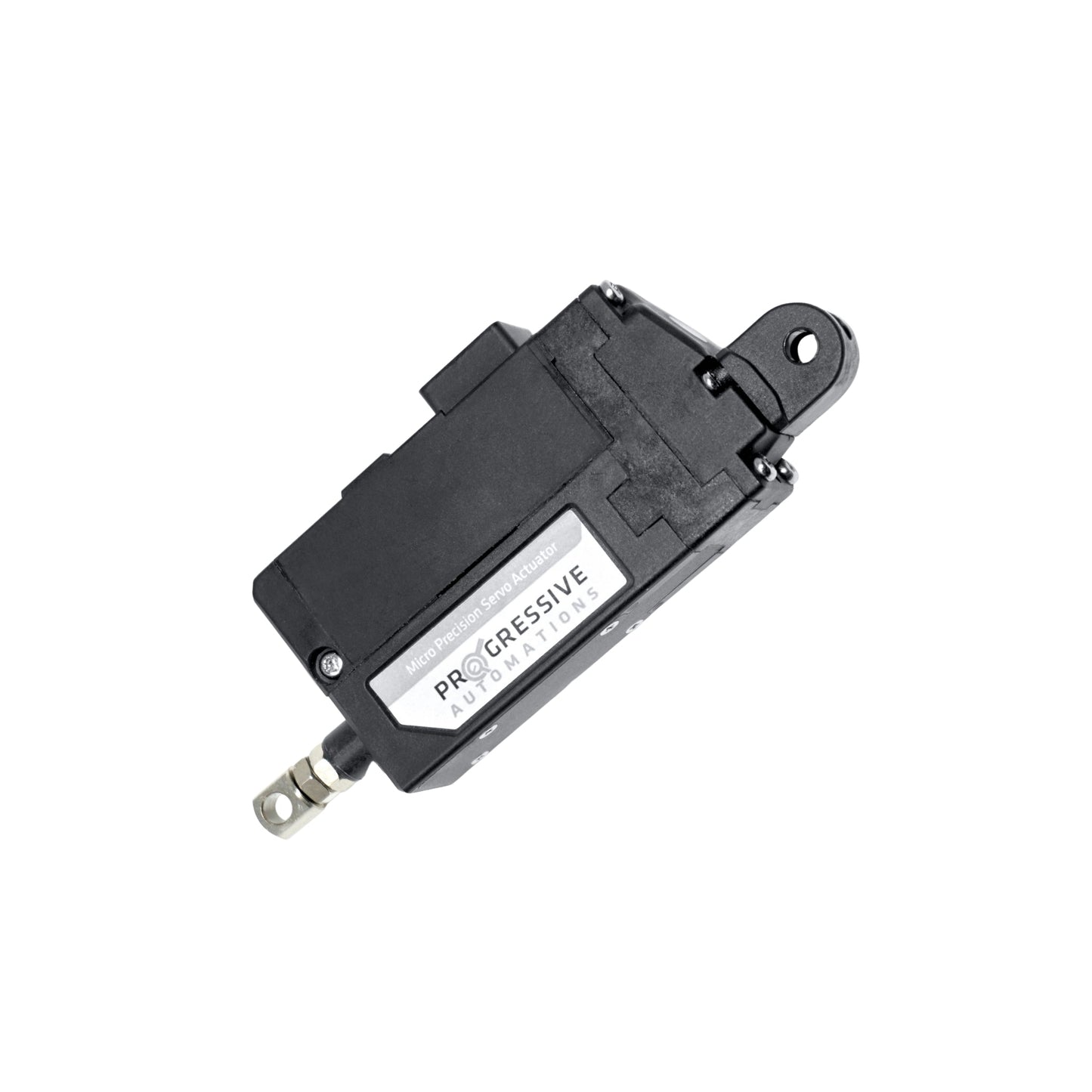
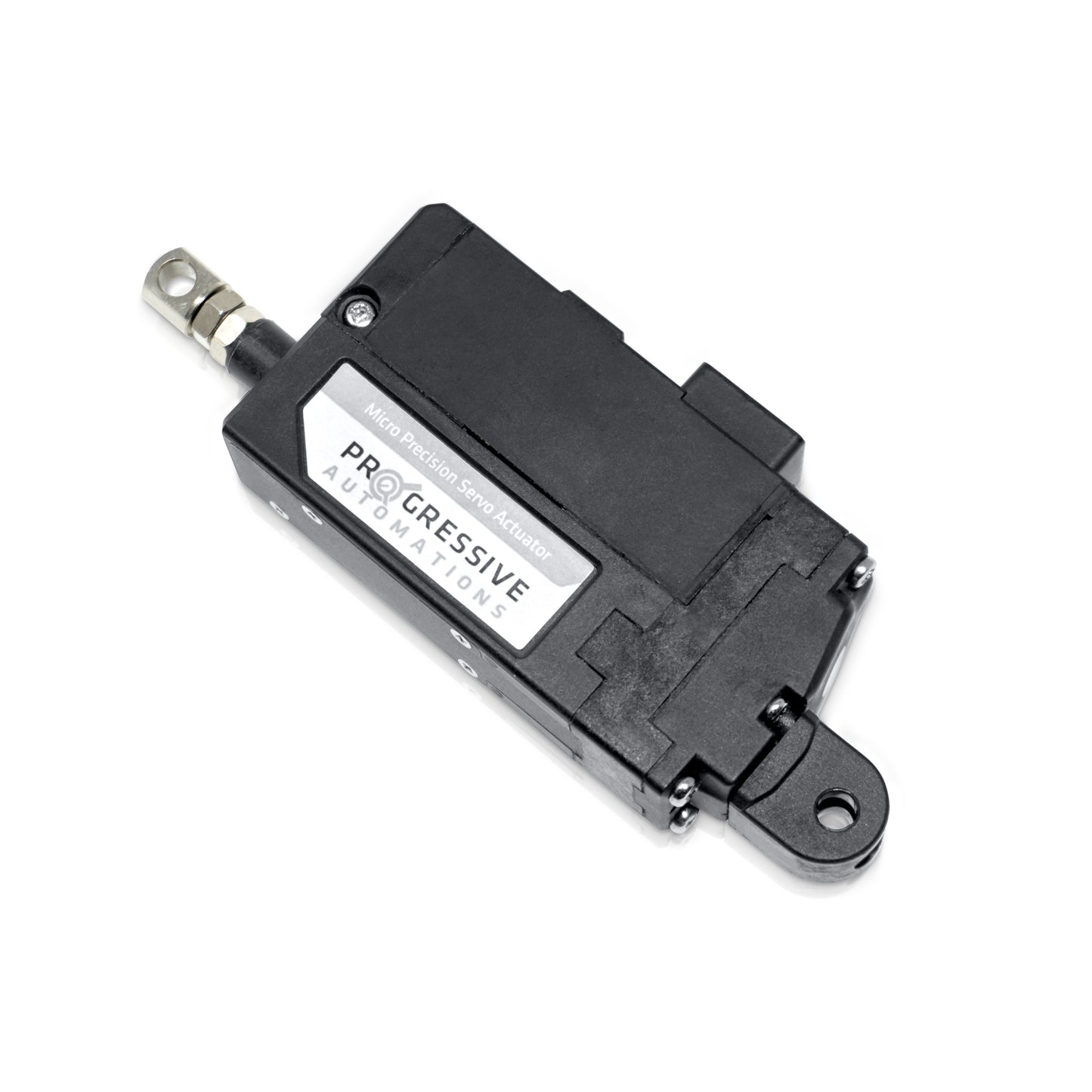
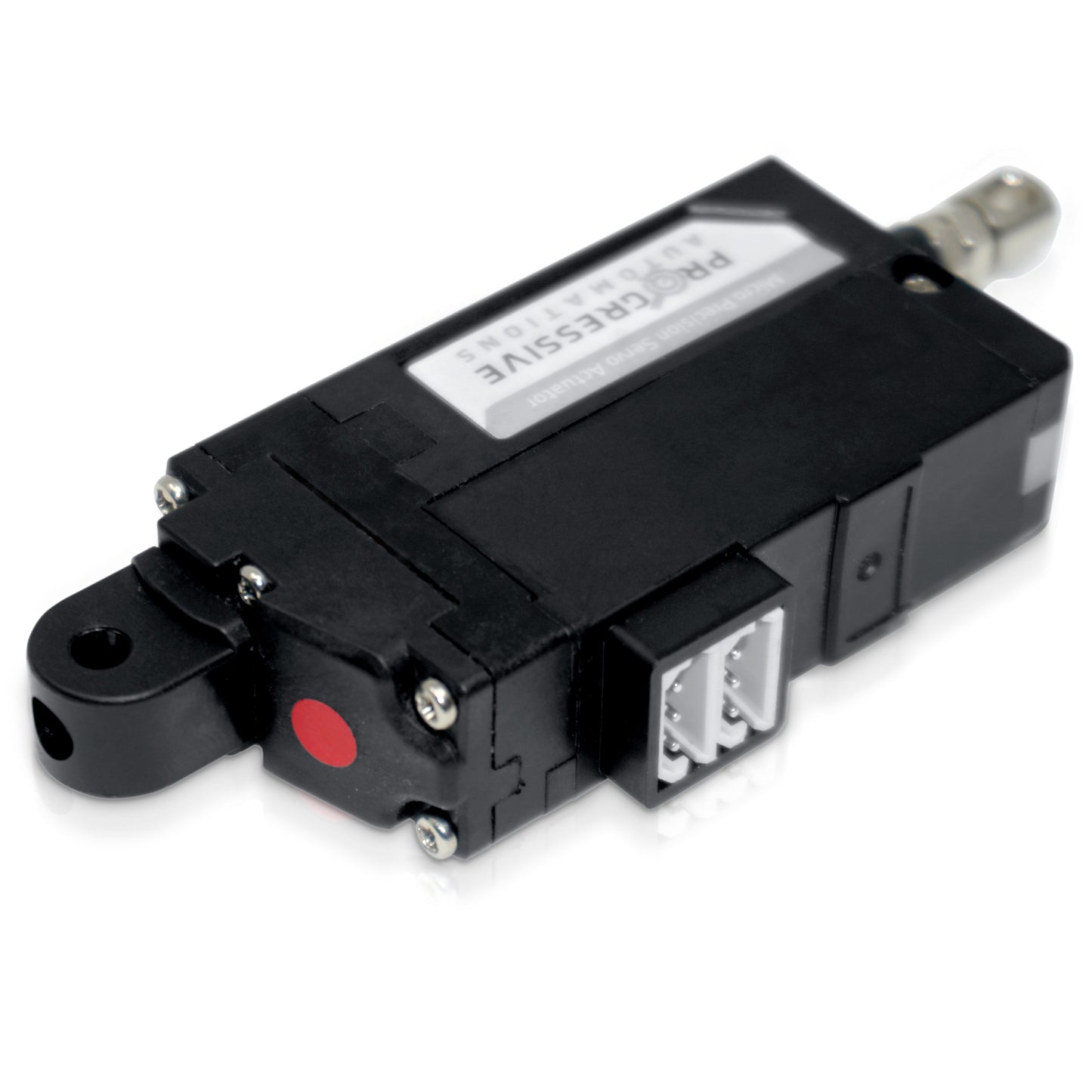
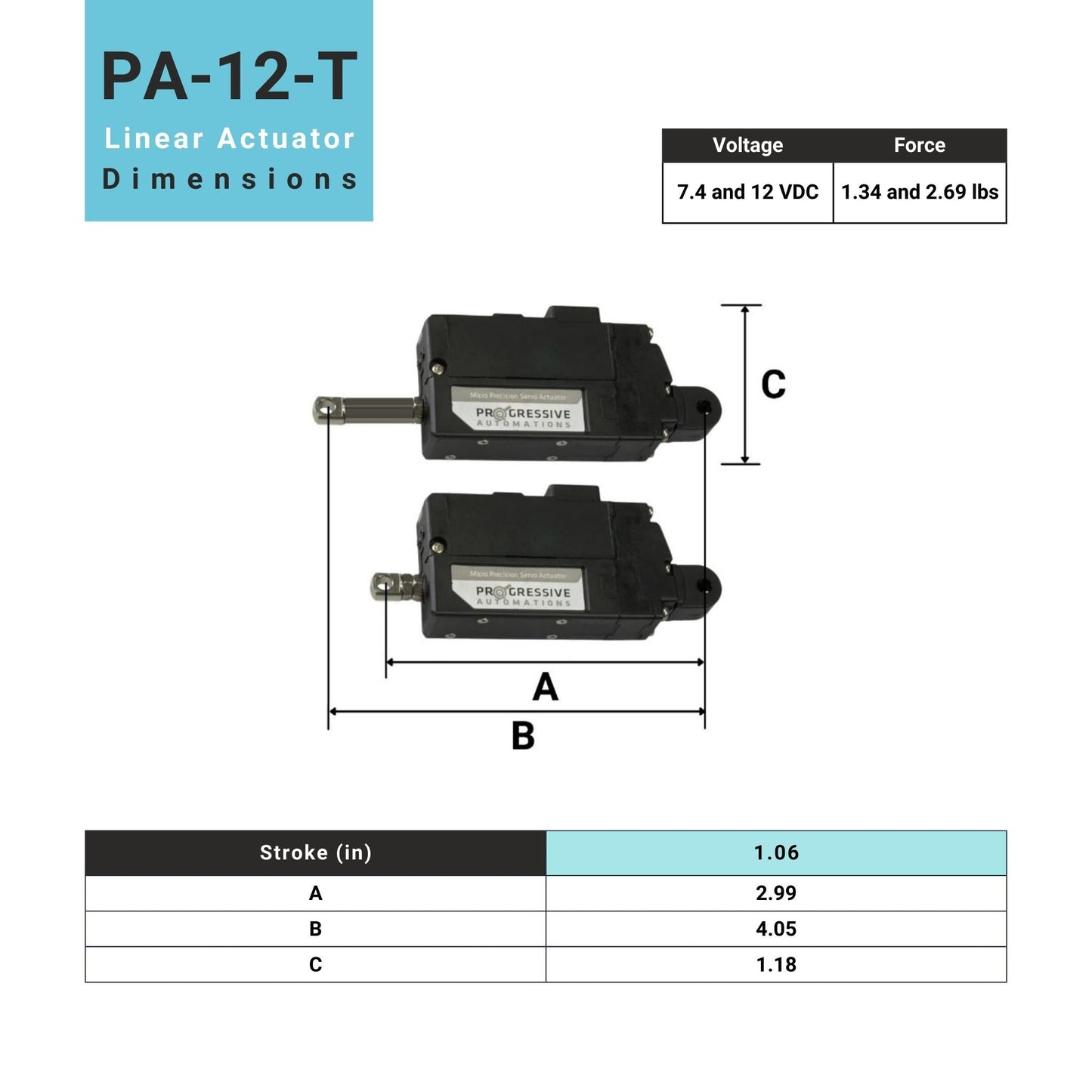

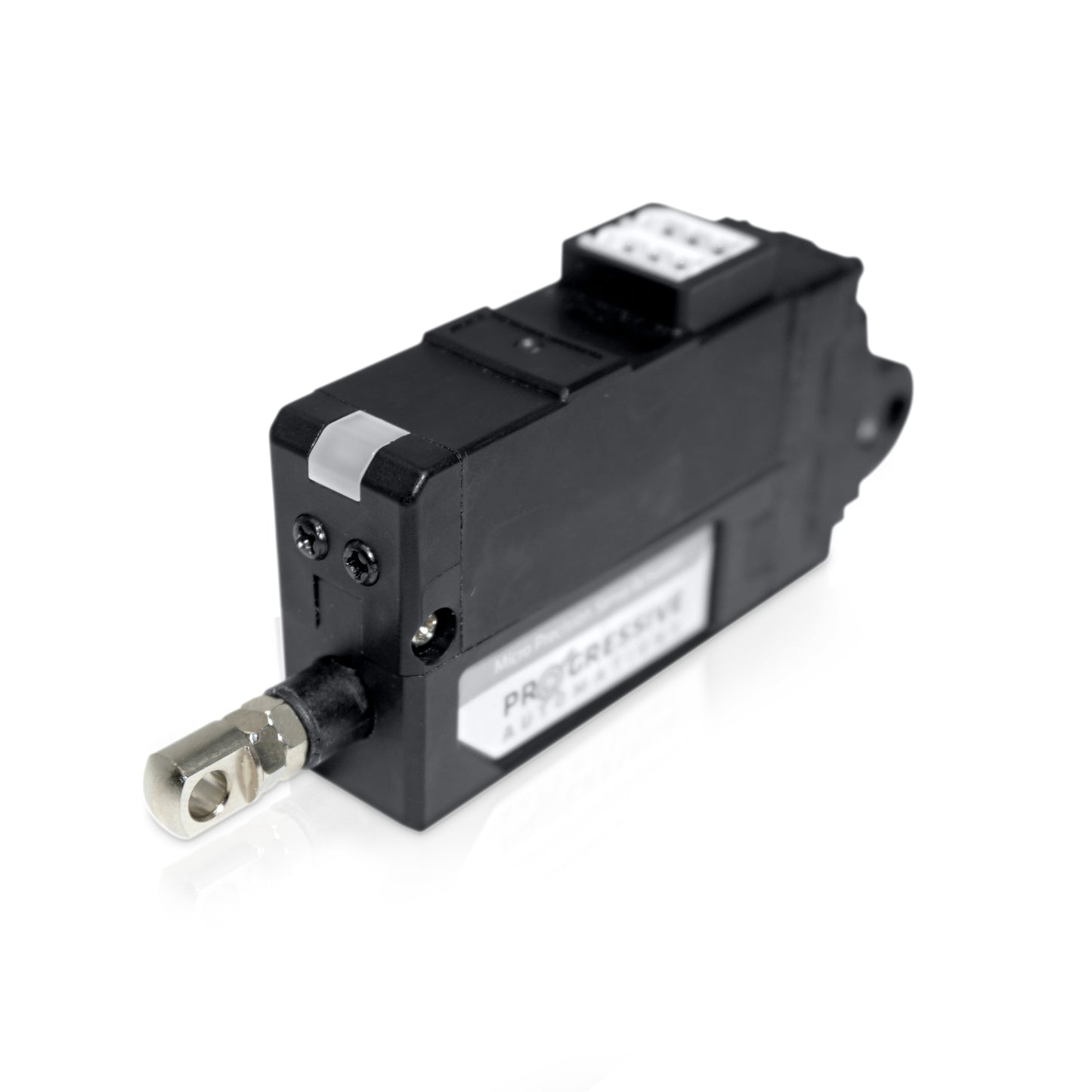
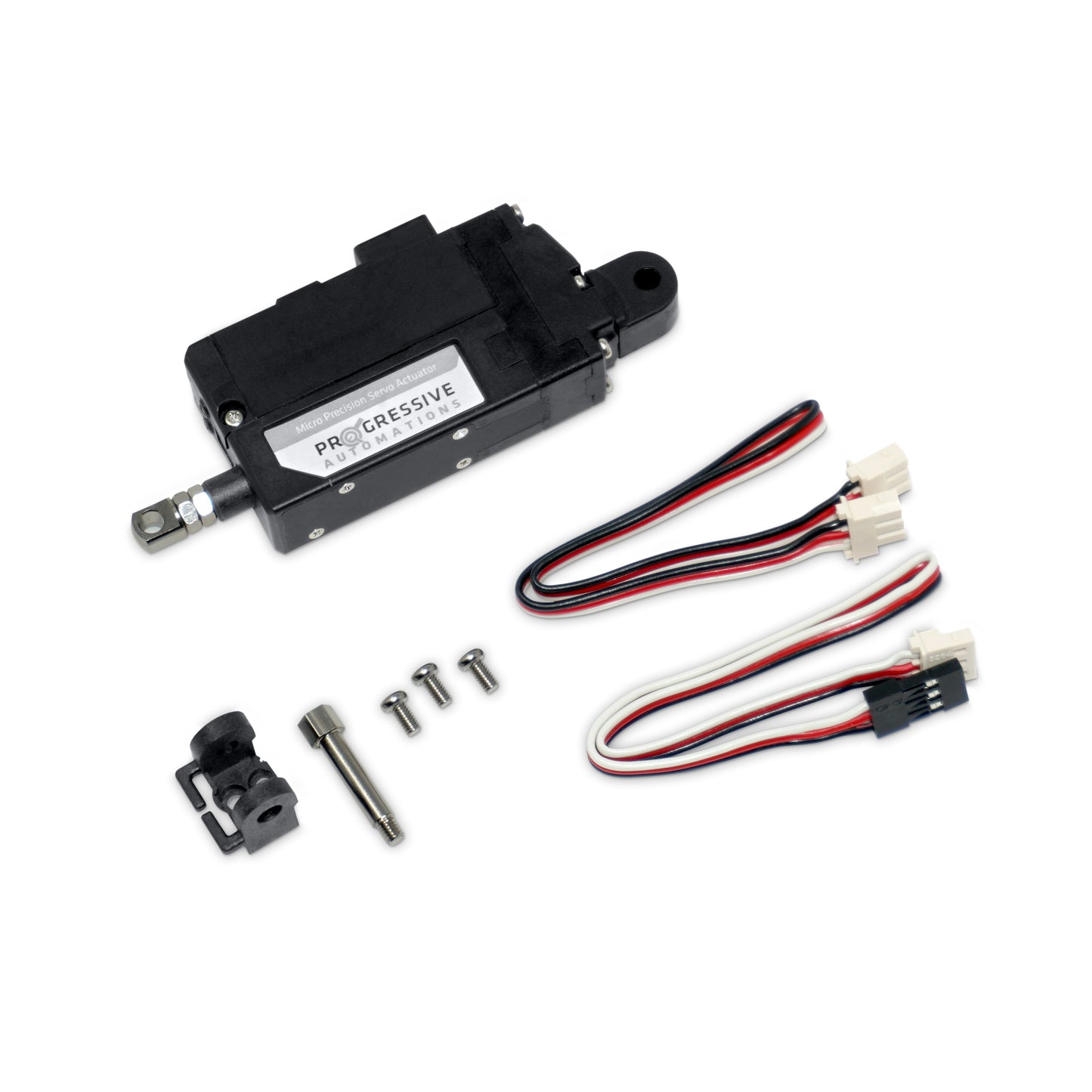
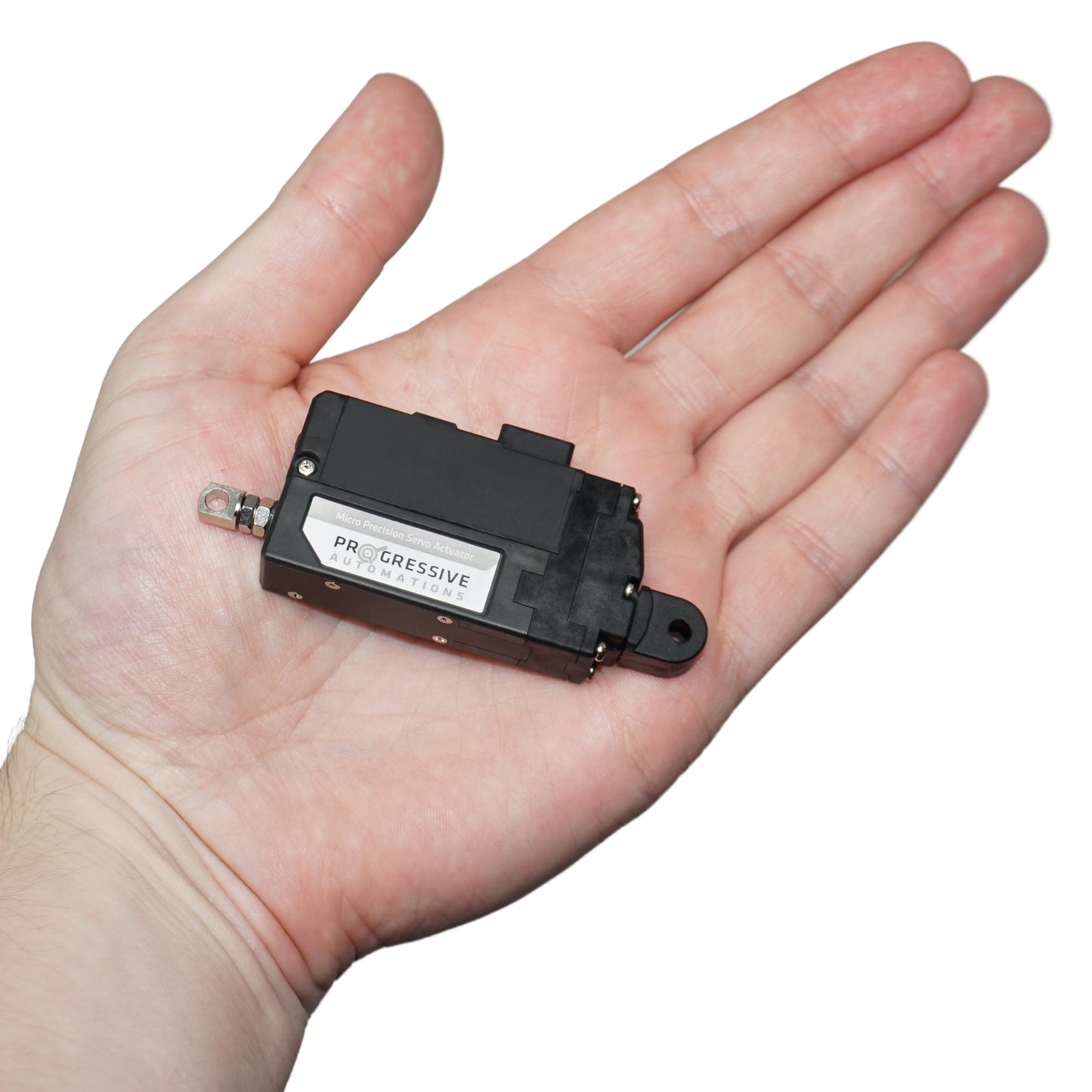
PA-12-T Specifications
The PA-12-T Micro Precision Servo Actuator with TTL/PWM communication provides precise position control, with positional accuracy up to 100µm. We’ve specifically designed this unit to overcome common challenges found in many micro linear actuator solutions, such as:
- Mechanical Wear and Tear: Many micro linear actuators are prone to early mechanical failures over time. The PA-12-T actuator addresses this with robust construction and quality motors designed for longevity.
- High Duty Cycle: The 50% duty cycle rating allows for reliability in applications that require continuous regular use without much rest time.
- Low Current Draw: Ensures minimal power consumption in electrical systems to maximize overall efficiency.
Key Benefits and Features of the PA-12-T
- Versatile Force Ratings: Designed with reliability and versatile capabilities to handle 6-12 N dynamic and 3-12 N static in a compact size.
- Durable Construction: Built with long-lasting materials, including a stainless steel stroke rod and polyformaldehyde housing, ensuring reliable performance over the years.
- High Positional Accuracy: Positional accuracy up to 100µm allows users the most precise control over any of our actuator model's position and movement.
- TTL or PWM Communication: The PA-12-T micro-precision actuator, along with its RS-485 counterpart, is the only actuator in our line of products that is programmable, allowing for advanced control options.
- Low Noise: The operating noise of <50 dBA makes this solution suitable for a wide range of industries requiring low noise operation.
PA-12-T Specifications
The PA-12-T Micro Precision Servo Actuator with TTL/PWM communication provides precise position control, with positional accuracy up to 100µm. We’ve specifically designed this unit to overcome common challenges found in many micro linear actuator solutions, such as:
- Mechanical Wear and Tear: Many micro linear actuators are prone to early mechanical failures over time. The PA-12-T actuator addresses this with robust construction and quality motors designed for longevity.
- High Duty Cycle: The 50% duty cycle rating allows for reliability in applications that require continuous regular use without much rest time.
- Low Current Draw: Ensures minimal power consumption in electrical systems to maximize overall efficiency.
Key Benefits and Features of the PA-12-T
- Versatile Force Ratings: Designed with reliability and versatile capabilities to handle 6-12 N dynamic and 3-12 N static in a compact size.
- Durable Construction: Built with long-lasting materials, including a stainless steel stroke rod and polyformaldehyde housing, ensuring reliable performance over the years.
- High Positional Accuracy: Positional accuracy up to 100µm allows users the most precise control over any of our actuator model's position and movement.
- TTL or PWM Communication: The PA-12-T micro-precision actuator, along with its RS-485 counterpart, is the only actuator in our line of products that is programmable, allowing for advanced control options.
- Low Noise: The operating noise of <50 dBA makes this solution suitable for a wide range of industries requiring low noise operation.
Following a set of standards is crucial for businesses to ensure their products and services can meet a level of quality that promotes customer satisfaction. At Progressive Automations, we aim for nothing but the best for our customers and strive toward continual improvements. Because of this, we are excited to announce that Progressive Automations is now ISO 9001:2015 certified!
Quality You Can Trust – Learn More2D/3D models

3D Models
Videos
Related blog articles:
